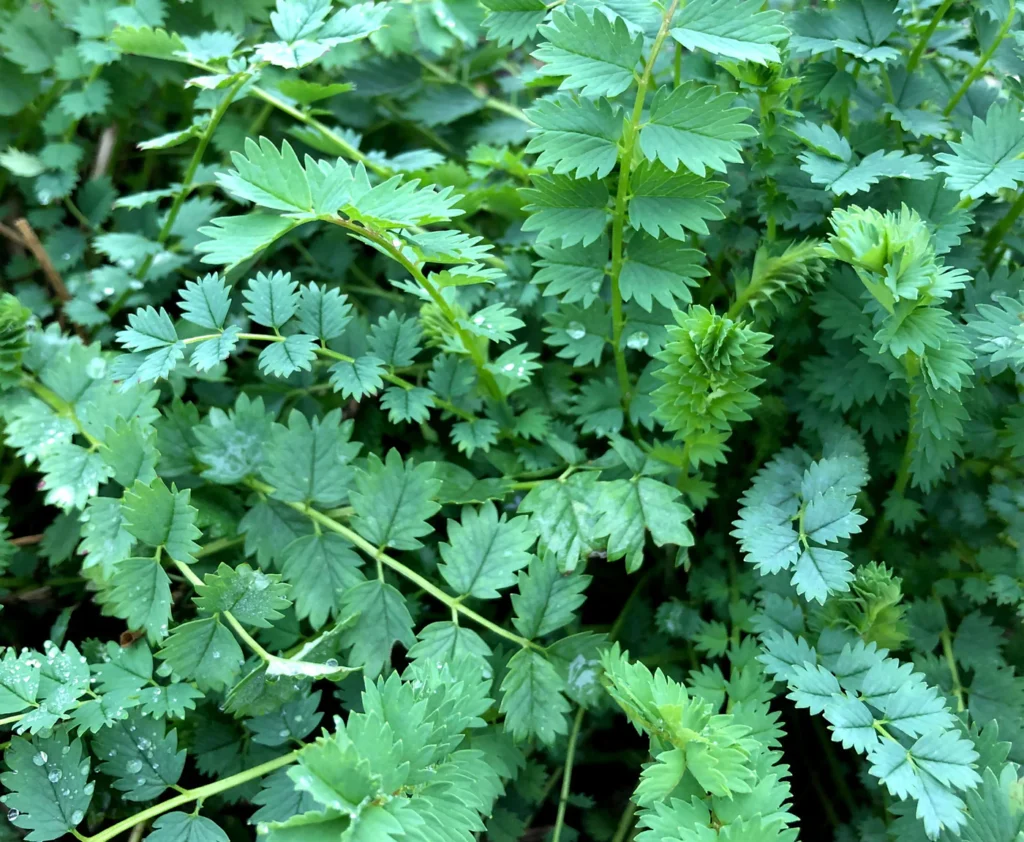
Description
A beautiful perennial plant belonging to the rose family (Rosaceae), burnet is cultivated for its edible leaves as well as its therapeutic qualities. Although it was originally used medicinally to treat hemorrhaging and combat the bubonic plague, its most well-known application now is as an astringent. There are four to twelve pairs of leaflets per leaf, and the leaves are rounded with toothed edges. Although the dense, little greenish flowers’ spikes are not ugly, they are typically removed to focus the plant’s energy on producing leaves. Salad burnet is a herb with a crisp, cucumber-like flavor.
Habitat
Native to Siberia, northwest Africa, southwest Western Asia, and western, central, and southern Europe are the salad burnet plants. Although it is not native to Britain, it has been granted naturalization since the 16th century. In South America, Australia, New Zealand, and most of North America, it has also become naturalized.
Uses
The flower parts are used for manufacturing medicine. Diarrhea, dysentery, ulcerative colitis, and bladder issues are treated with greater burnet. Additionally, it is used to treat blood vessel issues such as varicose veins, enlarged veins (phlebitis), and hemorrhoids.

Varieties
Although there are no recognized cultivars of burnet, Sanguisorba minor has a larger cousin, Sanguisorba officinalis, also referred to as greater burnet or official burnet, with round, red blooms and a similar flavor.
Plant Care
- Light
Full sun or some shade is ideal for salad burnet. If you are growing it in a dry region, you should cultivate it in partial shade.
- Soil
Although burnet grows best in settings that are somewhat damp, it is forgiving of poor, dry soil. However, adequate drainage is crucial.
- Water
Burnet grows well in dry conditions, although it tastes best when kept slightly damp during growth. While it shouldn’t be left to dry out, this plant will not accept damp roots. Watering the plants regularly—at least one inch a week—will help them stay cool and fruitful well into the summer.
- Temperature and Humidity
Burnet is a native of the dry, grassy meadows of central and southern Europe. If the soil is kept slightly moist, it can withstand hot and dry conditions. In areas with cold winters, it will annually die back to the ground and reappear in the spring.
- Fertilizer
If you apply old compost as a side-dressing to your burnet plants early in the spring, they should thrive. After that, give them fish emulsion or diluted water-soluble fertilizers every six weeks.
Table





